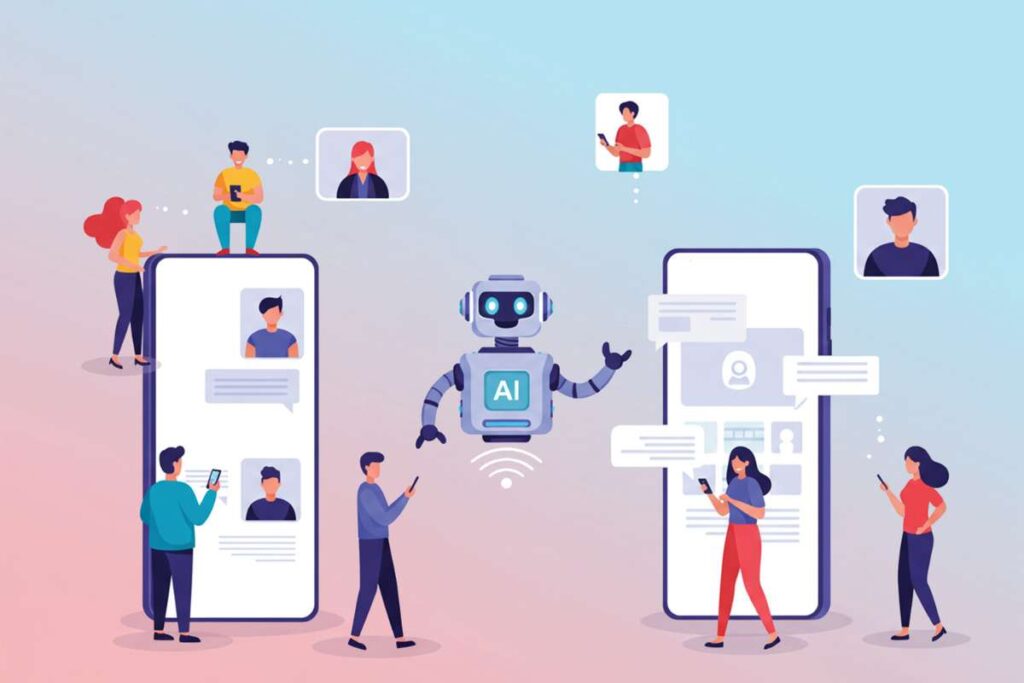Artificial Intelligence (AI) is everywhere today. From a voice assistant on your phone to self-driving cars, AI is shaping the way we live and work. But not all AI is the same. AI comes in different forms, each with its abilities and purposes. Understanding the 5 main types of AI can help us see how these smart systems work and where they might take us in the future.
In this article, we will break down the 5 main types of AI and the basics of this powerful technology.
Top 5 main types of AI and the basics of this powerful technology
1. Reactive Machines
The first of the 5 main types of AI is called Reactive Machines. This is the most basic type of AI. Reactive Machines can only respond to the present situation. They do not store memories or learn from past experiences. They work only with the information they have right now.
Example:
- IBM’s Deep Blue, the famous chess computer, is a Reactive Machine. It could analyze possible moves and pick the best one based on the current state of the game. However, it did not remember previous games or learn from past mistakes.
Key Features:
- No memory
- Only responds to current situations.
- Simple and limited tasks
Reactive Machines are great for specific tasks but cannot handle complex problems that require learning or planning.
2. Limited Memory

The second in the list of 5 main types of AI is Limited Memory AI. This type can use past information to make better decisions. It stores some data temporarily to help improve its performance.
Example:
- Self-driving cars use Limited Memory AI. They collect information about road conditions, nearby vehicles, speed, and routes. By combining current data with stored information, the car can make safer driving decisions.
Key Features:
- Uses past data to make decisions
- Learns from recent experiences
- Suitable for tasks that require some learning
Limited Memory AI is much smarter than Reactive Machines because it can adjust its actions based on previous outcomes.
3. Theory of Mind
The third of the 5 main types of AI is known as Theory of Mind. This is a more advanced form of AI that scientists are still developing. Theory of Mind AI would be able to understand the emotions, beliefs, intentions, and thoughts of others. This makes it capable of interacting more like a human being.
Example:
- At present, there are no fully developed Theory of Mind AI systems. However, researchers are working on robots and virtual assistants that can read facial expressions, tone of voice, and body language to better understand human emotions.
Key Features:
- Understands human feelings and intentions
- Can engage in deeper, more personal conversations
- Still in experimental stages
Theory of Mind AI could play a big role in healthcare, education, and customer service by providing more empathetic support.
4. Self-Aware AI
The fourth category in the 5 main types of AI is Self-Aware AI. This is the most advanced and theoretical form of AI. Self-aware AI would not only understand the emotions of others but would also have its thoughts, consciousness, and self-awareness.
Example:
- As of today, Self-Aware AI does not exist. It remains a topic of research and science fiction. Many experts debate whether it will ever be possible to create truly self-conscious machines.
Key Features:
- Has its thoughts and consciousness
- Understands both itself and others
- Only exists in theory for now.
If Self-Aware AI ever becomes real, it could change the world in ways we can’t even imagine. However, it also raises serious ethical and safety concerns.
5. Artificial Narrow Intelligence (ANI) and Artificial General Intelligence (AGI)

The fifth category in the 5 main types of AI includes two important subtypes: Artificial Narrow Intelligence (ANI) and Artificial General Intelligence (AGI).
✦ Artificial Narrow Intelligence (ANI):
This is the most common type of AI today. ANI is designed to perform one specific task very well. It can’t do anything outside its programmed job.
Example:
- Siri, Alexa, and Google Assistant are all forms of ANI. They can answer questions, set alarms, and play music, but they can’t make complex decisions outside their functions.
✦ Artificial General Intelligence (AGI):
AGI would be able to perform any intellectual task that a human can do. It would have the ability to learn, reason, solve problems, and adapt to new situations just like us.
Example:
- AGI has not been fully developed yet. Scientists and engineers are still working towards this goal.
Key Features:
- ANI: Specialized for one task
- AGI: Can perform many tasks like a human
- AGI is still under development
These two forms complete the 5 main types of AI, showing both what we have today and what we hope to achieve in the future.
Why Understanding the 5 Main Types of AI Matters
Learning about the 5 main types of AI helps us see how this technology fits into our daily lives and what future possibilities exist. Each type of AI has its strengths and weaknesses. Some are already helping us today, while others are still in development or exist only in theory.
Understanding these types also helps businesses, governments, and individuals make better decisions about how to use AI responsibly and safely.
The Future of AI

As AI technology continues to grow, we may see more advanced systems that move from Limited Memory to Theory of Mind and even toward Self-Aware AI. However, with great power comes great responsibility. Developers, lawmakers, and society must work together to ensure that AI benefits everyone while minimizing risks.
The 5 main types of AI show us that while we have made amazing progress, there is still a long journey ahead. But with careful planning and ethical use, AI has the potential to improve healthcare, education, transportation, and countless other areas of our lives.
In simple words, the 5 main types of AI are:
- Reactive Machines – Basic, no memory.
- Limited Memory – Learns from past data.
- Theory of Mind – Understands emotions and intentions.
- Self-Aware AI – Conscious and self-thinking (still theoretical).
- ANI & AGI – Current specialized AI and future human-like AI.
By knowing the 5 main types of AI, we can better appreciate both the technology we use today and the exciting future that lies ahead.
Conclusion:
The 5 main types of AI help us understand how smart machines work and where they may lead us in the future. From simple reactive machines to the idea of self-aware AI, each type plays a different role. By knowing the 5 main types of AI, we can better see how technology supports our daily life and what changes may come next.


















